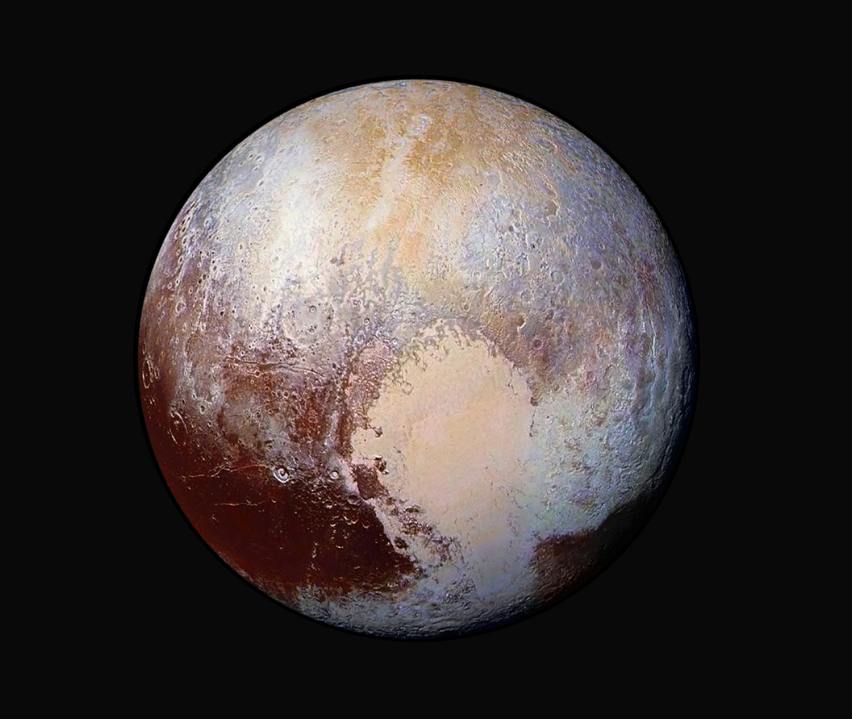CAPE CANAVERAL, Fla. — Pluto is hazier than scientists expected and appears to be covered with flowing ice.
The team responsible for the New Horizons flyby of Pluto last week released new pictures Friday of the previously unexplored world on the edge of the solar system.
“If you’re seeing a cardiologist, you may want to leave the room,” principal scientist Alan Stern teased at the opening of the news conference at NASA headquarters. “There are some pretty mind-blowing discoveries.”
The spacecraft, now 7.5 million beyond Pluto, detected layers of haze stretching 100 miles into the atmosphere, much higher than anticipated. All this haze is believed to account for the dwarf planet’s reddish color.
If you were standing on Pluto and looking up, you probably wouldn’t notice the haze, said George Mason University’s Michael Summers. In fact, New Horizons had to wait until after its closest approach on July 14, so the sun would silhouette Pluto and the atmosphere could be measured by means of the scattered sunlight.
As for the ice flows, they appear to be relatively recent: no more than a few tens of millions of years, according to William McKinnon of Washington University in St. Louis. That compares with the 4.5 billion-year age of Pluto.
Send questions/comments to the editors.



Success. Please wait for the page to reload. If the page does not reload within 5 seconds, please refresh the page.
Enter your email and password to access comments.
Hi, to comment on stories you must . This profile is in addition to your subscription and website login.
Already have a commenting profile? .
Invalid username/password.
Please check your email to confirm and complete your registration.
Only subscribers are eligible to post comments. Please subscribe or login first for digital access. Here’s why.
Use the form below to reset your password. When you've submitted your account email, we will send an email with a reset code.